Development of a Practical Model for Predicting Soil Salinity in a Salt Marsh in the Arakawa River Estuary
Abstract
:1. Introduction
2. Materials and Methods
2.1. Study Site
2.2. Field Measurement
2.2.1. Water Salinity and Water Level
2.2.2. Soil Salinity
2.2.3. Hydraulic Conductivity
2.3. Numerical Model
2.3.1. Water Salinity
2.3.2. Soli Salinity
3. Results
3.1. Water Salinity
3.2. Soil Salinity and Hydraulic Conductivity
4. Discussion
4.1. Mechanism of Variation of Water Salinity
4.2. Pattern of Salt Supply to Soil at Marsh
4.3. Mechanism of Salt Supply from Channel to Marsh to Marsh
5. Conclusions
Author Contributions
Funding
Institutional Review Board Statement
Informed Consent Statement
Data Availability Statement
Acknowledgments
Conflicts of Interest
References
- Keigo, N. River and Wetland Restoration. BioScience 2006, 56, 419–429. [Google Scholar]
- Bureau of Construction Tokyo. Bureau of Construction Overview 2012, Creating Our Future—Roads, Water, and Greenery; Bureau of Construction Tokyo: Nishishinjuku, Japan, 2012. [Google Scholar]
- Yodo River Office. The Yodo River Working Towards Fostering Confidence and Culture; Yodo River Office: Osaka, Japan, 2004. [Google Scholar]
- Lissner, J.; Schierup, H.H. Effects of salinity on growth of Phragmites australis. Aquat. Bot. 1997, 55, 247–260. [Google Scholar] [CrossRef]
- Qian, L.; Tadaharu, I.; Ryosuke, A.; Fenglin, Y.; Shushen, Z. Soil Salinity Reduction by River Water Irrigation in a Reed Field, A Case Study in Shuangtai Estuary Wetland, Northeast China. Ecol. Eng. 2016, 89, 32–39. [Google Scholar]
- McLusky, D.S. The Estuarine Ecosystem, 2nd ed.; Wiley-Blackwell: Hoboken, NJ, USA, 1999. [Google Scholar]
- Yonghai, S.; Genyu, Z.; Jianzhong, L.; Yazhu, Z.; Jiabo, X. Performance of a Constructed Wetland in Treating Brackish Wastewater from Commercial Recirculating and Super-intensive Shrimp Growout Systems. Bioresour. Technol. 2011, 102, 9416–9424. [Google Scholar]
- Heta, R.; Samuli, K.; Erik, B. Brackish-Water Benthic Fauna under Fluctuating Environmental Conditions: The Role of Eutrophication, Hypoxia, and Global Change. Front. Mar. Sci. 2019, 6, 1–13. [Google Scholar]
- Norouzi, M.; Bagheri, T.M. The Effects of Salinity, PH and Temperature Changes on the Macrobenthos of the Shirud River Deltaic Region (Caspian Sea. Northern Iran). In Proceedings of the 2nd International Congress on Applied Ichthyology & Aquatic Environment, Messolonghi, Greece, 10–12 November 2016; pp. 544–549. [Google Scholar]
- Colin, R.J.; Scarlett, C.V. Effects of salinity and nutrients on microbial assemblages in Louisiana wetland sediments. Wetlands 2009, 29, 277–287. [Google Scholar]
- Heather, G.; Nigel, W.T.Q. Comparison of Soil Salinity Analysis Methods for Wetland Soils; The U.S. Department of Energy and the U.S. Bureau of Reclamation and Department: Washington, DC, USA, 2004; pp. 1–11. [Google Scholar]
- Yuan, C.; Jingkuan, S.; Wenquan, L.; Jing, W.; Mengwei, Z. Mapping coastal wetland soil salinity in different seasons using an improved comprehensive land surface factor system. Ecol. Indic. 2019, 107, 105517. [Google Scholar] [CrossRef]
- Drew, N.F.; Sammy, L.K.; David, C.W. Evaluating Abiotic Influences on Soil Salinity of Inland Managed Wetlands and Agricultural Croplands in a Semi-Arid Environment. Wetlands 2014, 34, 1229–1239. [Google Scholar]
- Marcia, S.G.; Rondney, J.S. Subsurface Flow and Salinity Response Patterns in a Tidal Wetland Marsh Plain. J. Coast. Res. 2001, 27, 88–108. [Google Scholar]
- Gregg, E.M.; David, M.B.; Chris, R.P.; Donald, R.K. Mapping Soil Pore Water Salinity of Tidal Marsh Habitats Using Electromagnetic Induction in Great Bay Estuary, USA. Wetlands 2011, 31, 309–318. [Google Scholar]
- Juan, H.; David, C.W.; Carman, C. Two Fixed Ratio Dilutions for Soil Salinity Monitoring in Hypersaline Wetlands. PLoS ONE 2015, 10, e0126493. [Google Scholar] [CrossRef] [Green Version]
- Japanese Standards Association. Methods for Testing the Hydraulic Conductivity of Saturated Soils; JIS A 1218; Japanese Standards Association: Tokyo, Japan, 2020. [Google Scholar]
- Creager, W.P.; Justin, J.D.; Hinds, J. Engineering for Dams, Vol. III, Earth, Rock-Fill, Steel and Timber Dams; John, Wiley & Sons, Inc.: Hoboken, NJ, USA, 1945; pp. 645–649. [Google Scholar]
- Nagata, N. Numerical Analysis of Two-Dimensional Unsteady Flow on a General Coordinate System. In Proceedings of the Workshop on Using Computers in Water Engineering (Lecture Text), Kyoto University, Kyoto, Japan, August 1999. [Google Scholar]
- Japan Institute of Construction Engineering. Guide for the Study of River Channel Planning; Japan Institute of Construction Engineering: Tokyo, Japan, 2002; pp. 115–118. [Google Scholar]
- Yu, K.; Nerriza, O.; Yuta, U.; Katsuhide, Y. Effect of Saltwater Intrusion on Water Distribution in Arakawa and Sumidagawa Estuaries under Normal Conditions. J. JSCE Ser. B2 Coast. Eng. 2019, 75, I_205–I_210. [Google Scholar]
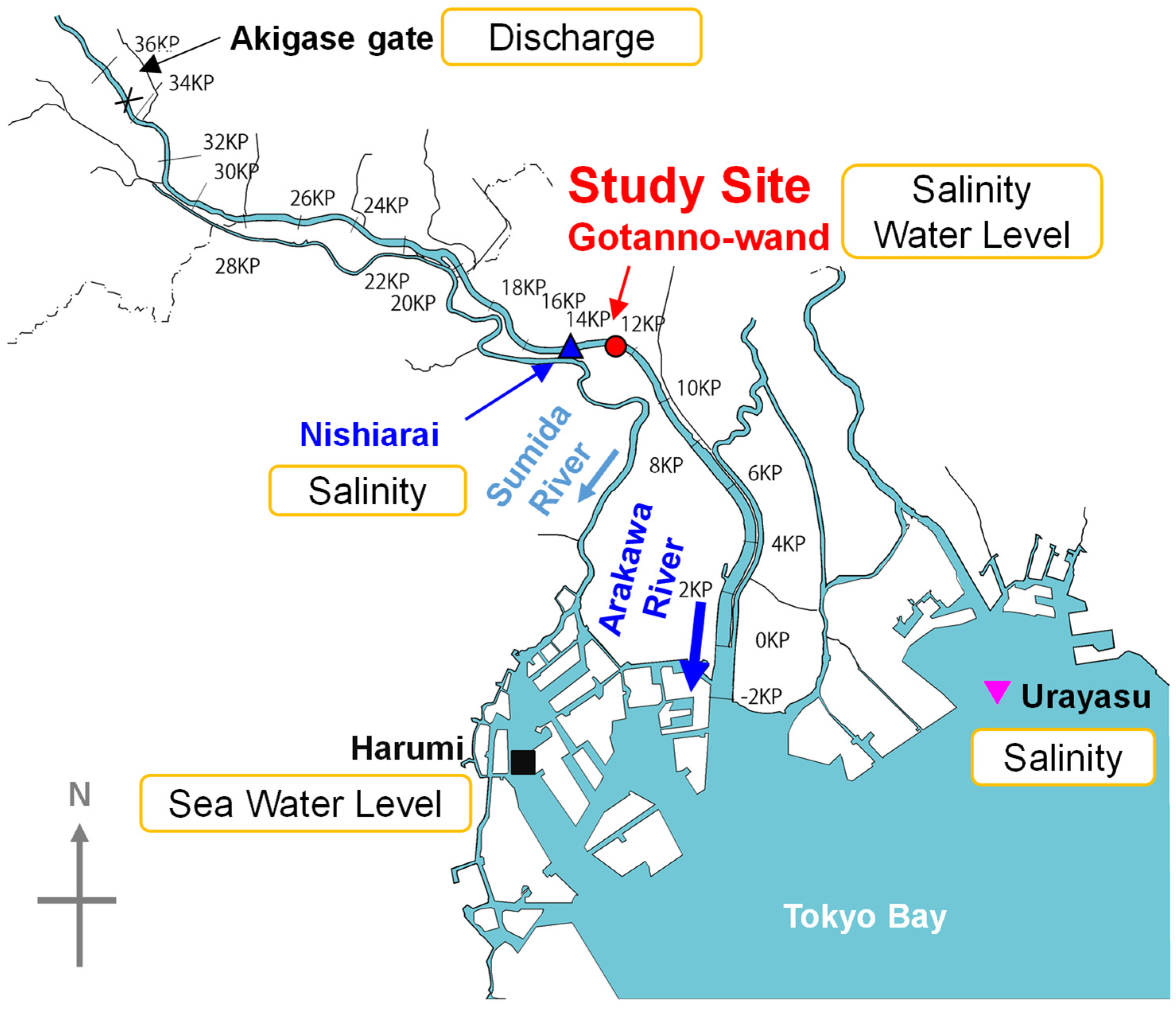
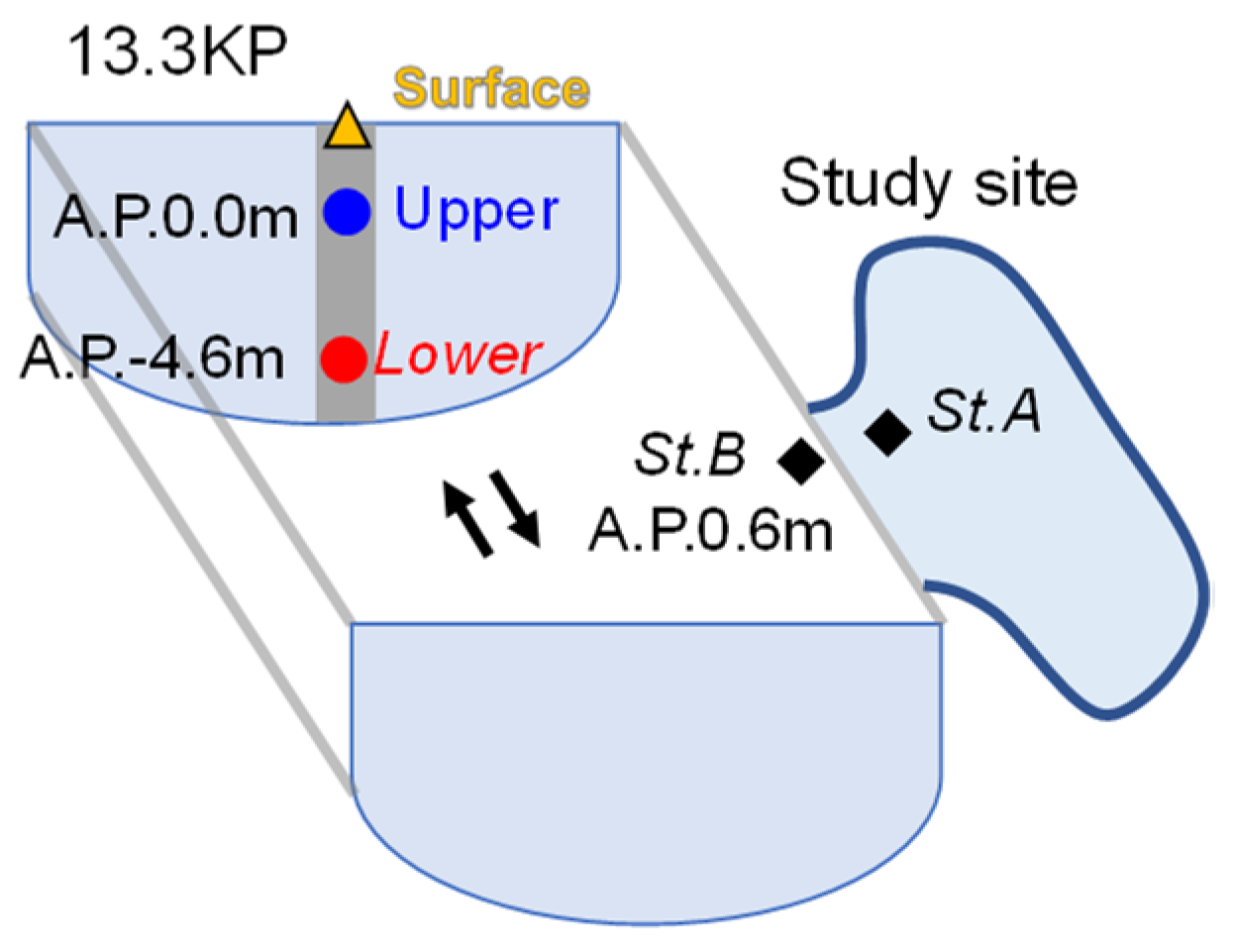
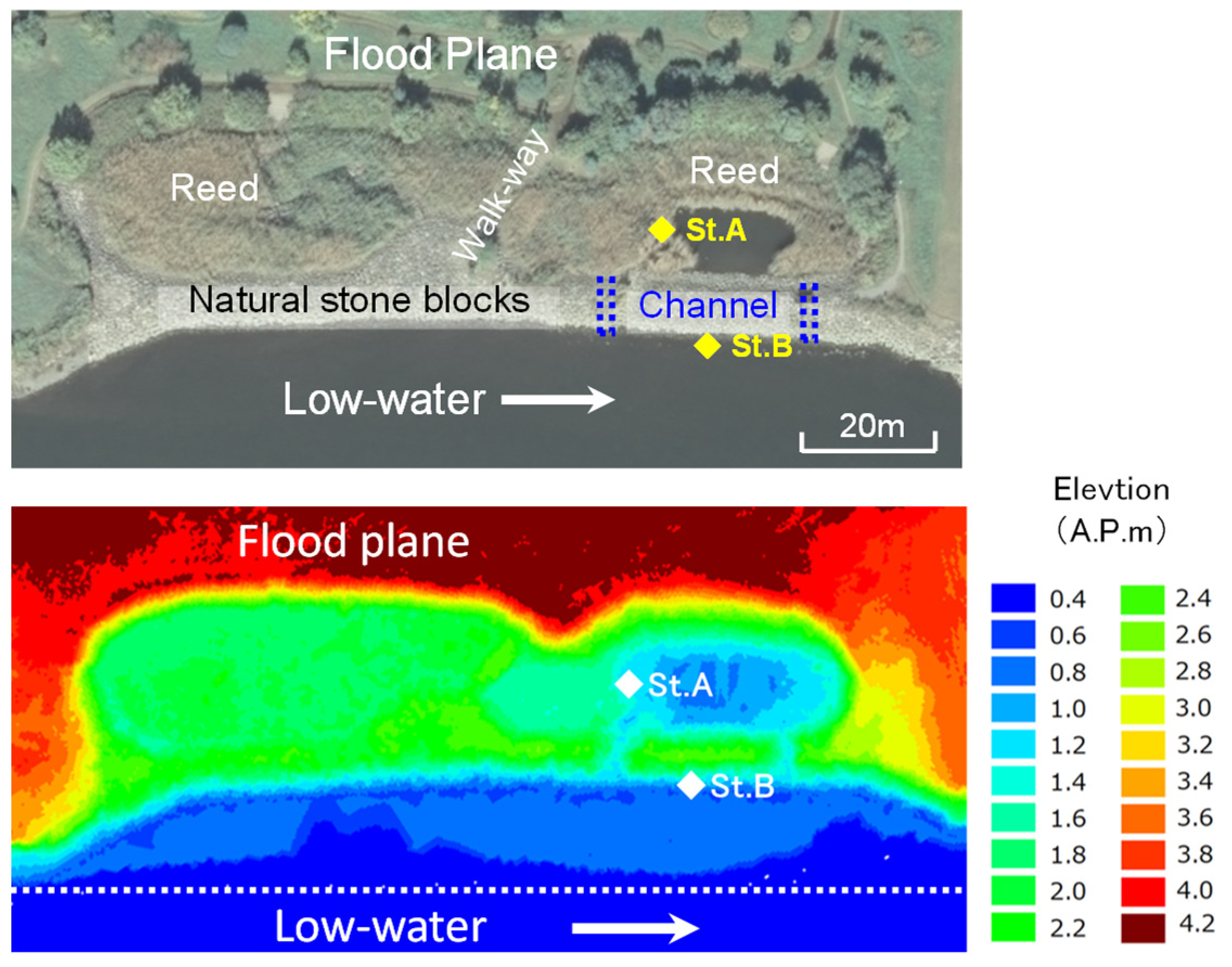


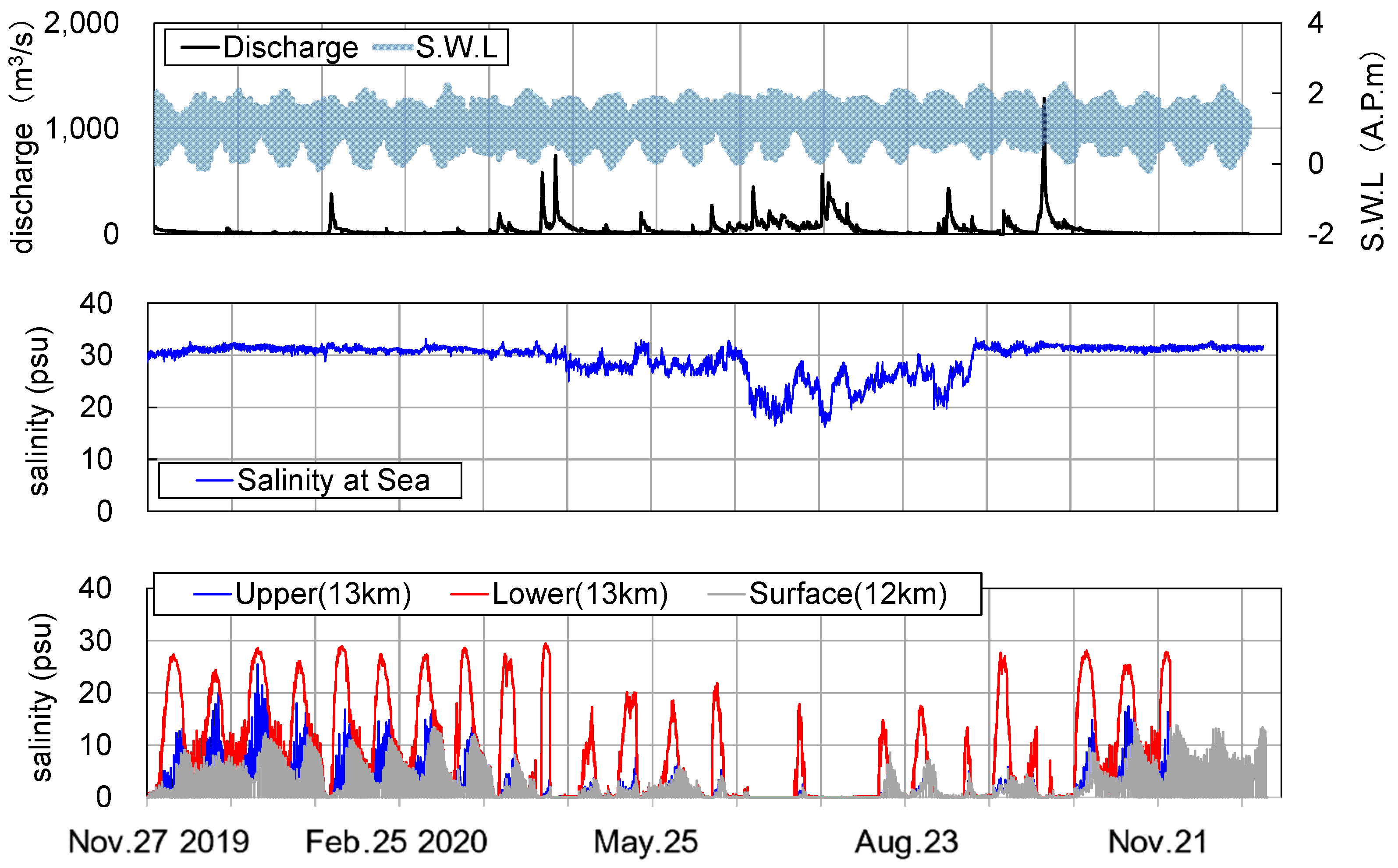
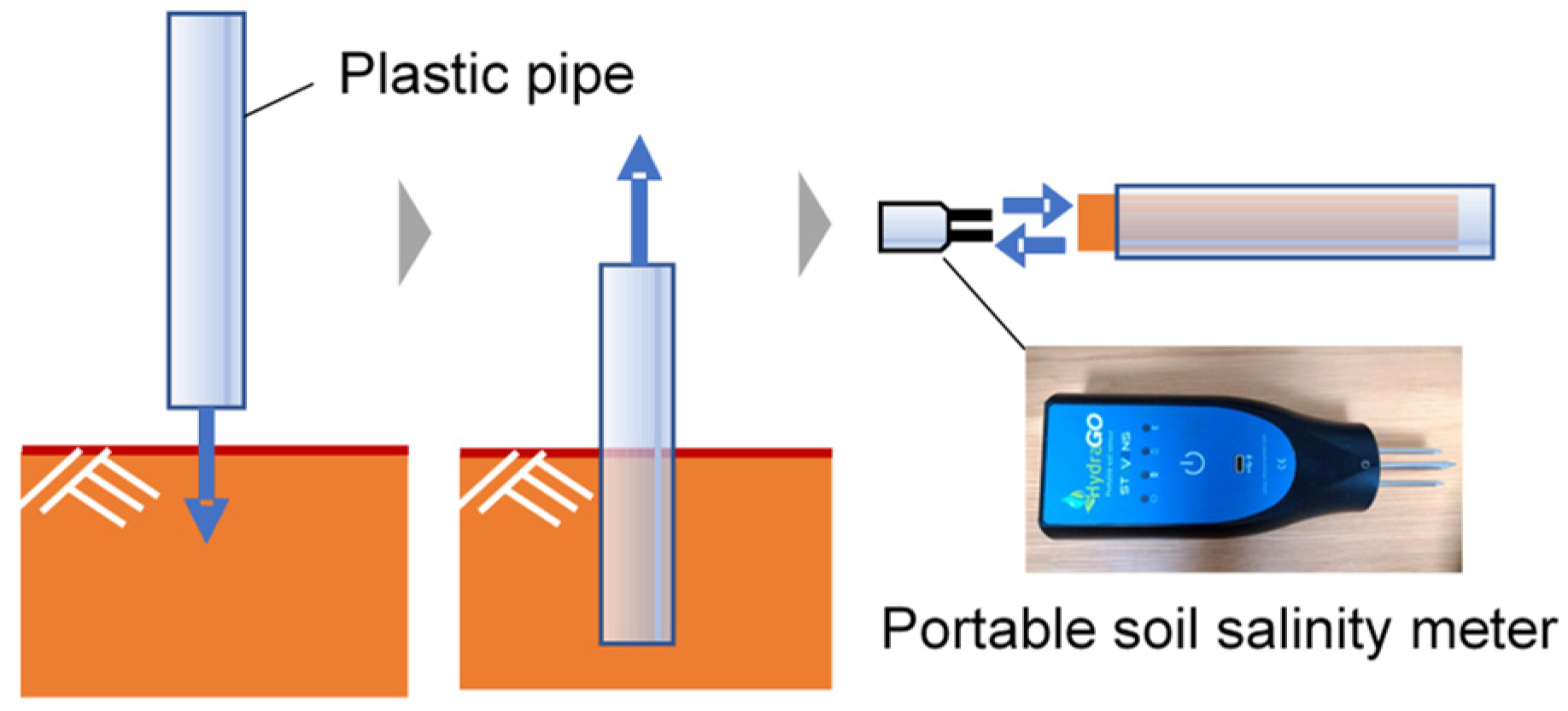
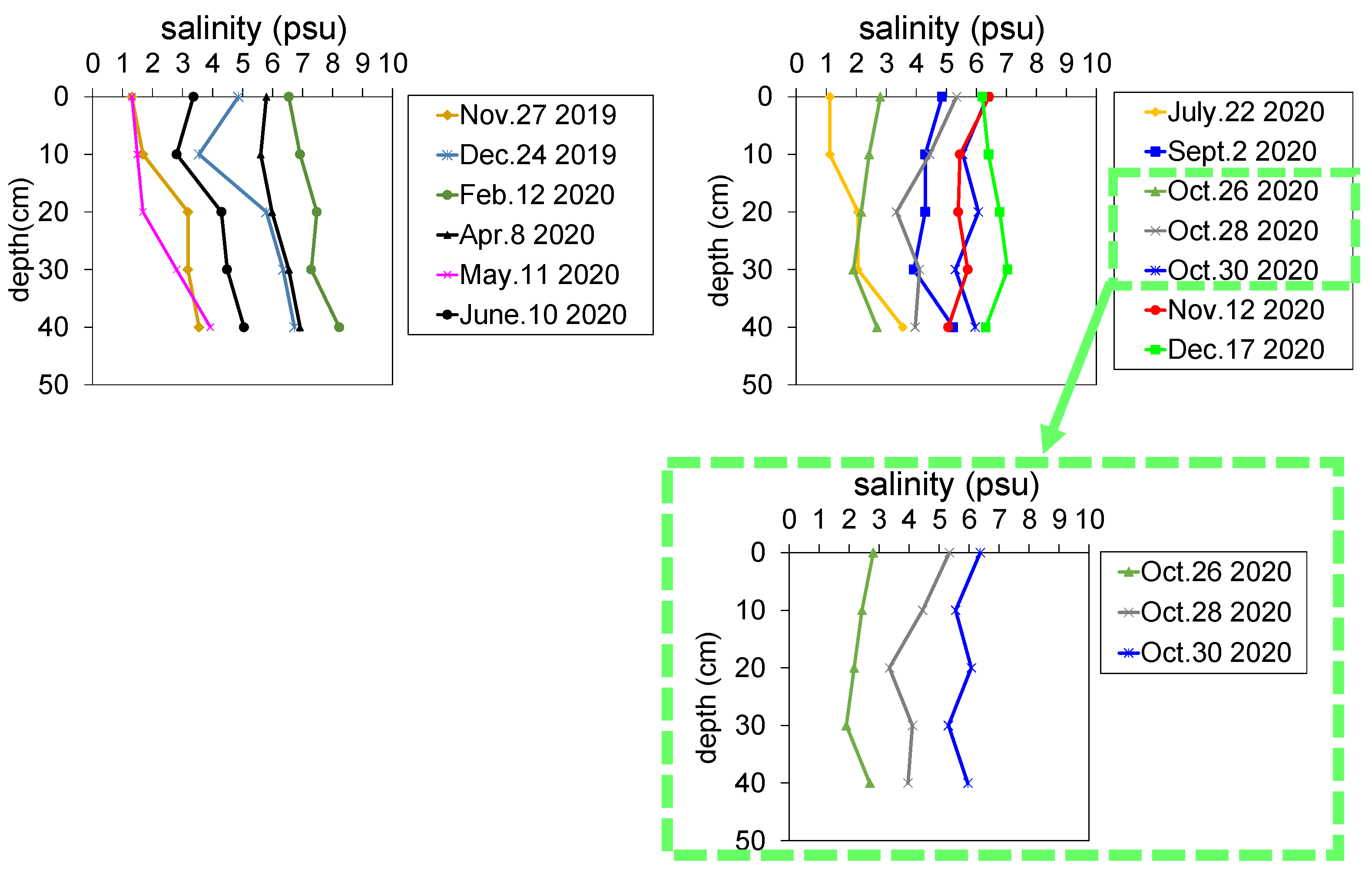
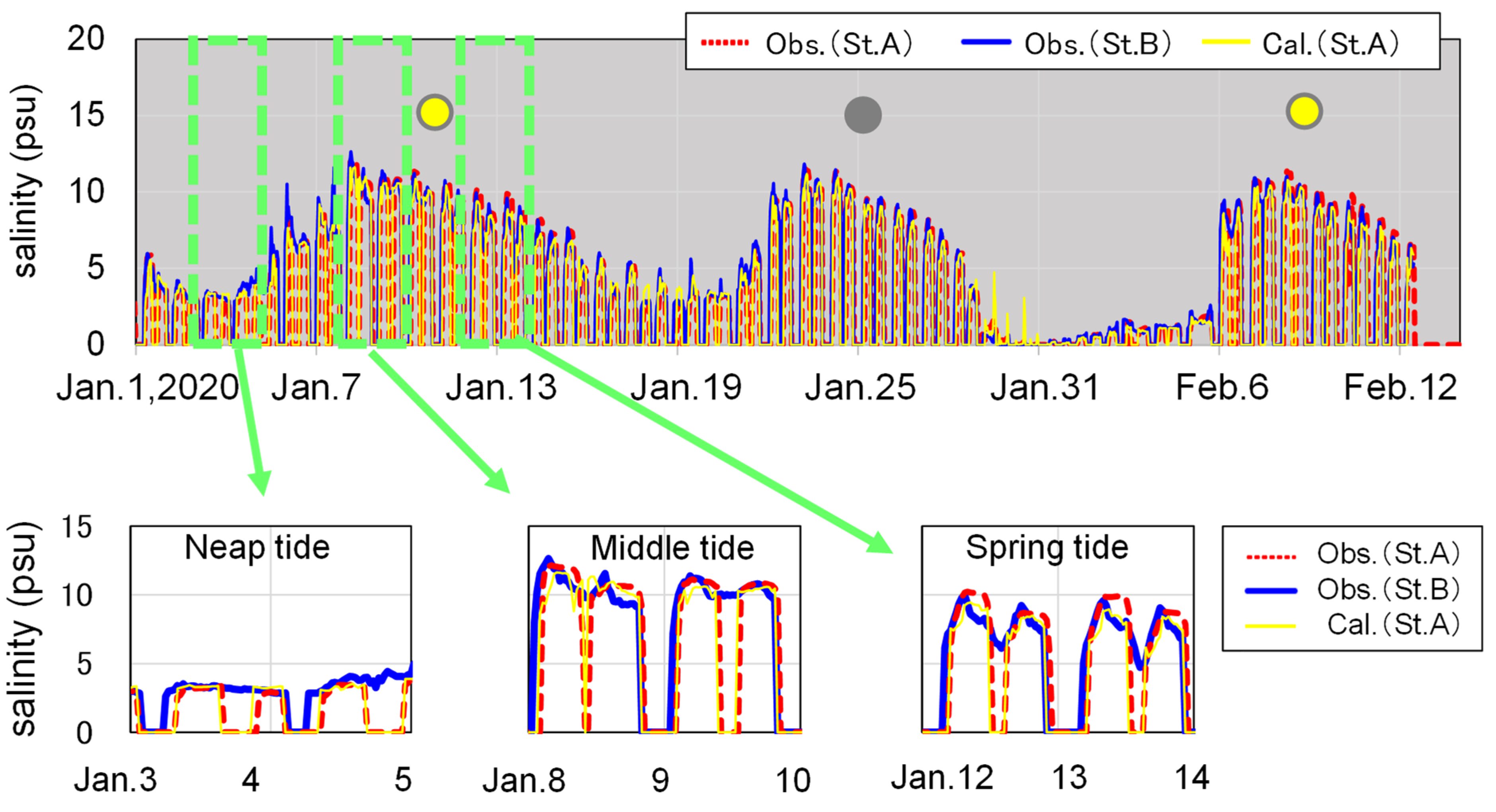
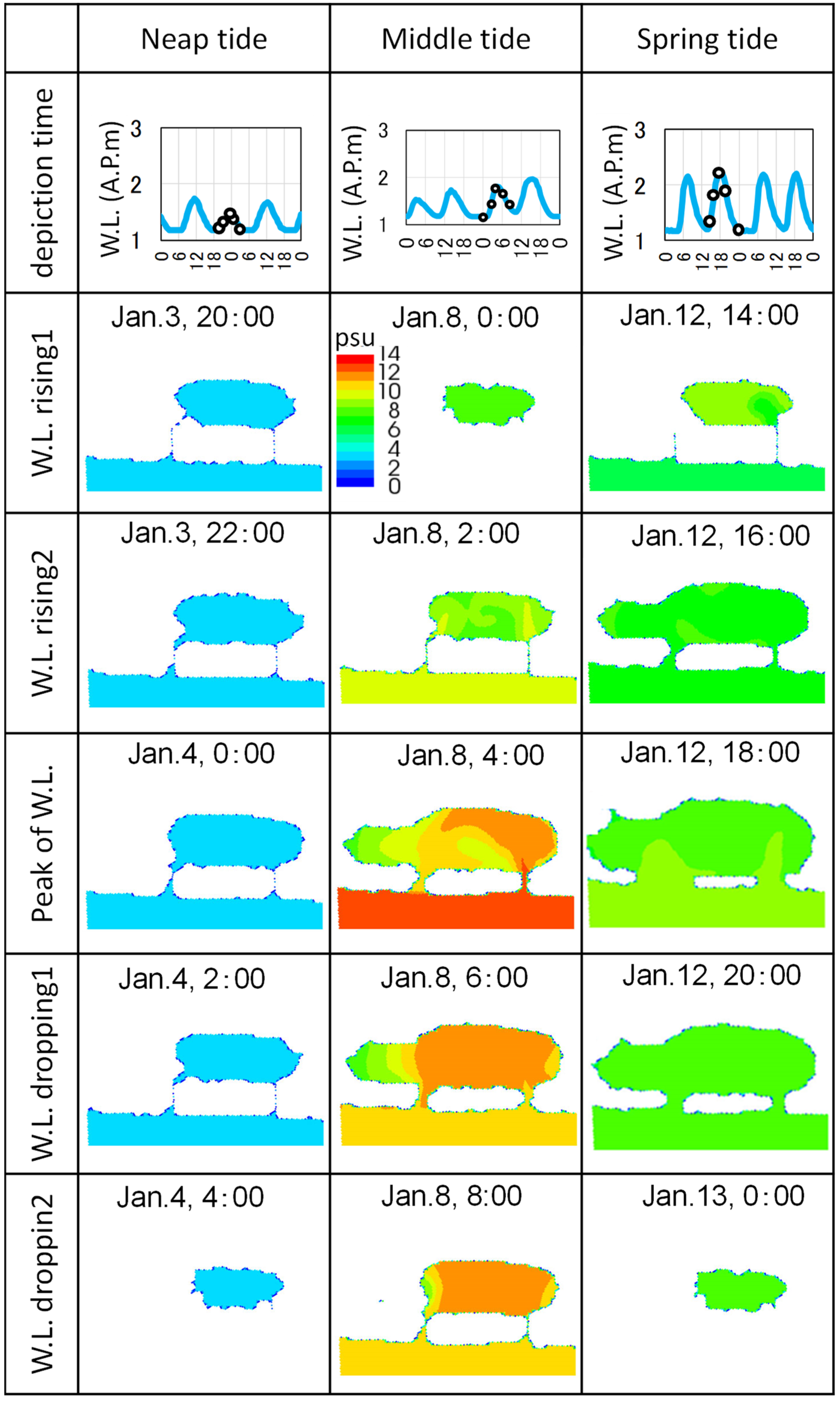

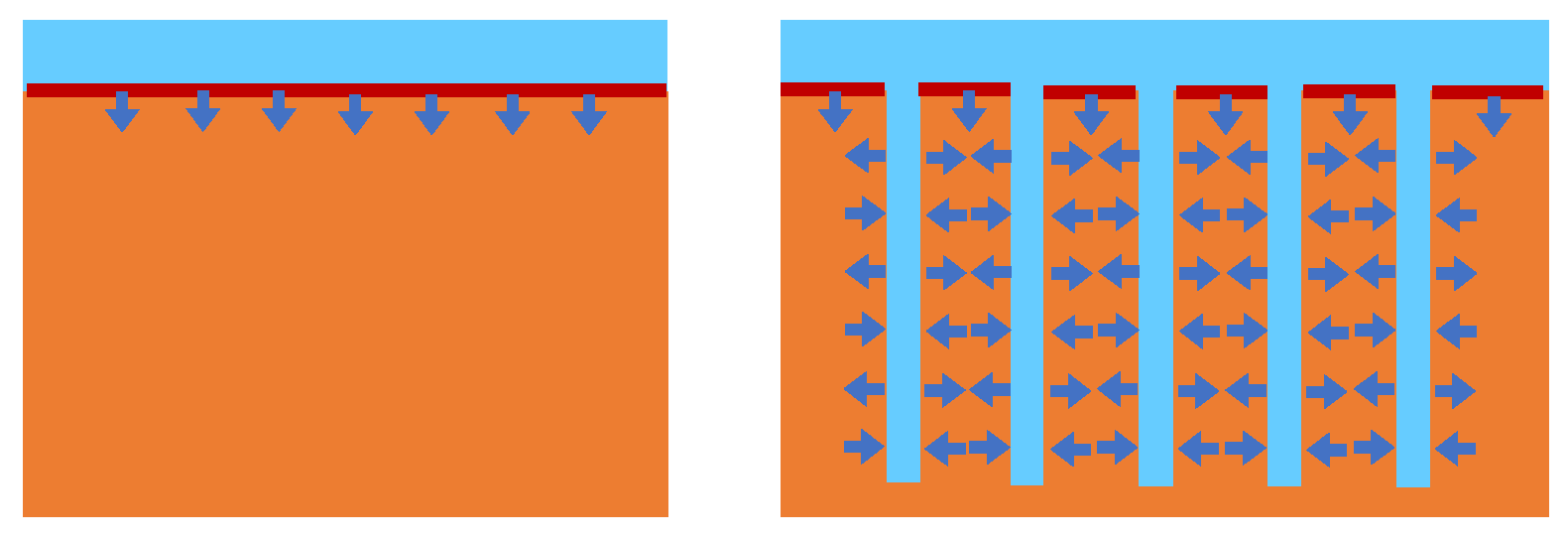
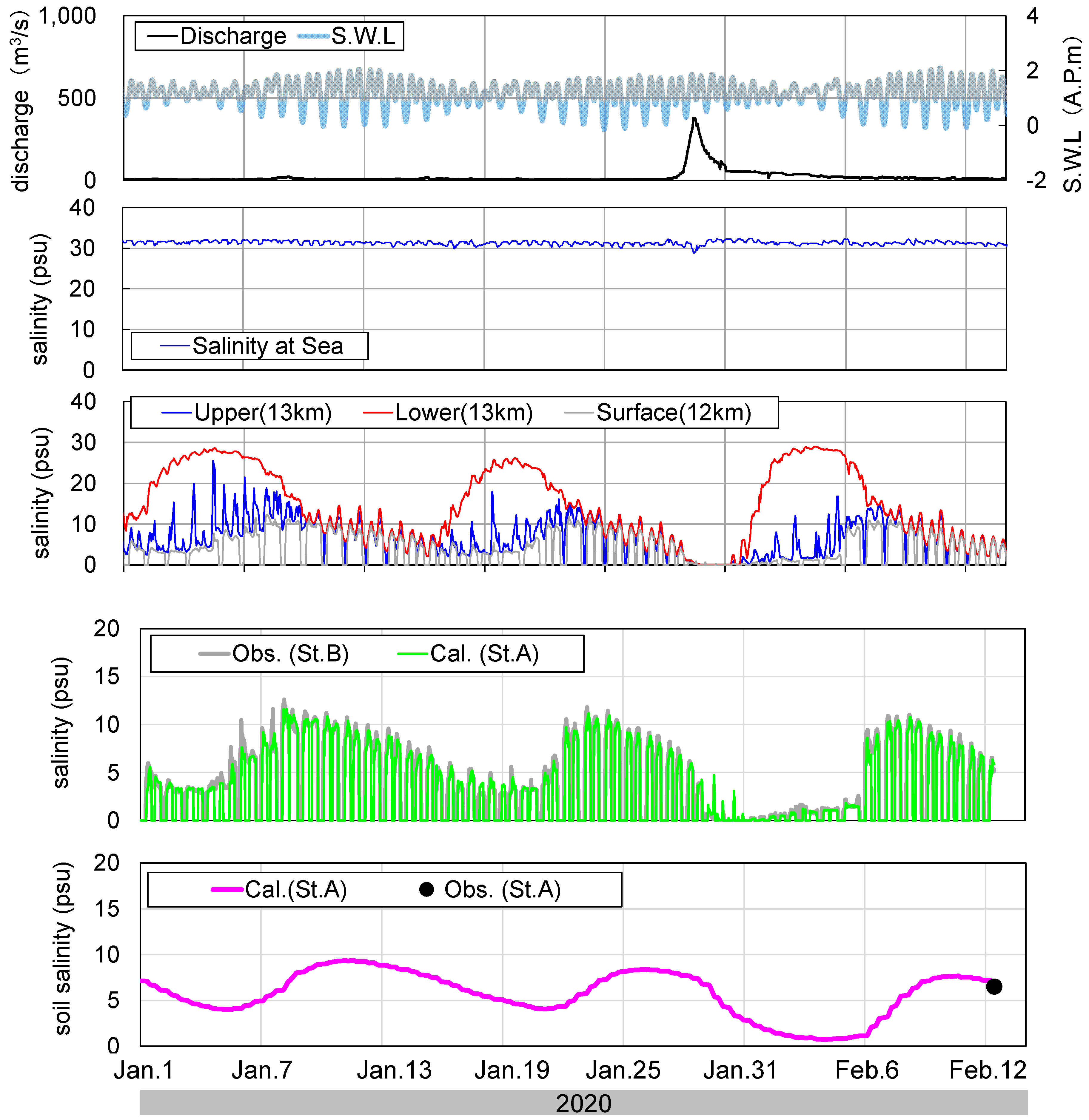
Publisher’s Note: MDPI stays neutral with regard to jurisdictional claims in published maps and institutional affiliations. |
© 2021 by the authors. Licensee MDPI, Basel, Switzerland. This article is an open access article distributed under the terms and conditions of the Creative Commons Attribution (CC BY) license (https://creativecommons.org/licenses/by/4.0/).
Share and Cite
Kuroda, N.; Yokoyama, K.; Ishikawa, T. Development of a Practical Model for Predicting Soil Salinity in a Salt Marsh in the Arakawa River Estuary. Water 2021, 13, 2054. https://doi.org/10.3390/w13152054
Kuroda N, Yokoyama K, Ishikawa T. Development of a Practical Model for Predicting Soil Salinity in a Salt Marsh in the Arakawa River Estuary. Water. 2021; 13(15):2054. https://doi.org/10.3390/w13152054
Chicago/Turabian StyleKuroda, Naoki, Katsuhide Yokoyama, and Tadaharu Ishikawa. 2021. "Development of a Practical Model for Predicting Soil Salinity in a Salt Marsh in the Arakawa River Estuary" Water 13, no. 15: 2054. https://doi.org/10.3390/w13152054
APA StyleKuroda, N., Yokoyama, K., & Ishikawa, T. (2021). Development of a Practical Model for Predicting Soil Salinity in a Salt Marsh in the Arakawa River Estuary. Water, 13(15), 2054. https://doi.org/10.3390/w13152054







